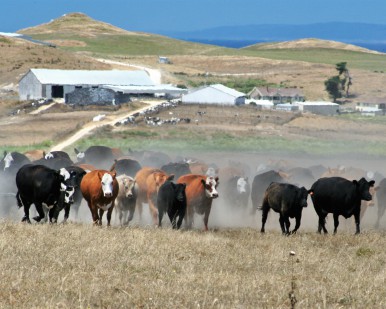San Rafael, CA – After back-to-back declining years, Marin County experienced a resurgence in the gross value of its agricultural products in 2018, recording 8% growth over 2017. It nearly made up for the 10% loss incurred between 2016 and 2017.
 The 8% increase in livestock and crop values in 2018 nearly made up for the 10% loss incurred between 2016 and 2017.
The 8% increase in livestock and crop values in 2018 nearly made up for the 10% loss incurred between 2016 and 2017.Stacy Carlsen, Marin County’s
Agricultural Commissioner, presented his
2018 annual report to the Board of Supervisors on June 18 and said the total gross value of all products was $94,121,000, up from $87,198,000 a year ago.
Organic milk remains the No. 1 agricultural commodity produced by Marin County farmers and ranchers with a gross value of $28,035,000. However, that’s down 8% from the $30,338,000 value a year earlier. Conventional milk accounted for $3,161,000 in value, down 17% from 2017. There continues to be a significant oversupply of organic and conventional milk which has driven prices down. Additionally, more conventional dairies have transitioned to organic production, which has further aggravated lower organic milk prices.
The determining factors for the overall growth were increases in cattle and poultry. Cattle gross value went from $10,784,000 in 2017 to $14,186,000, a 32% boost. This was due to an increase in animals and higher prices per head. There were 14,700 head of cattle with a value of $965 per head last year, compared with 14,398 animals with a value of $749 per head in 2017. Poultry gross value went from $17,816,000 in 2017 to $23,233,000, a 30% jump, due to greater production. The poultry figure includes the value of chicken meat and eggs for consumption.
Other categories showing growth were winter feed for livestock known as silage (up 69%), wine grapes (up 37%), nursery products (up 22%), pasture (up 6%), and fruits and vegetables (up 3%). Sectors experiencing declines were wool (down 26%), hay (down 15%), aquaculture (down 5%), and sheep (down 2%).
All Marin County Livestock and Crop reports are online, including the new one. Reports are sent to the California Department of Food and Agriculture to be included in statewide reports.